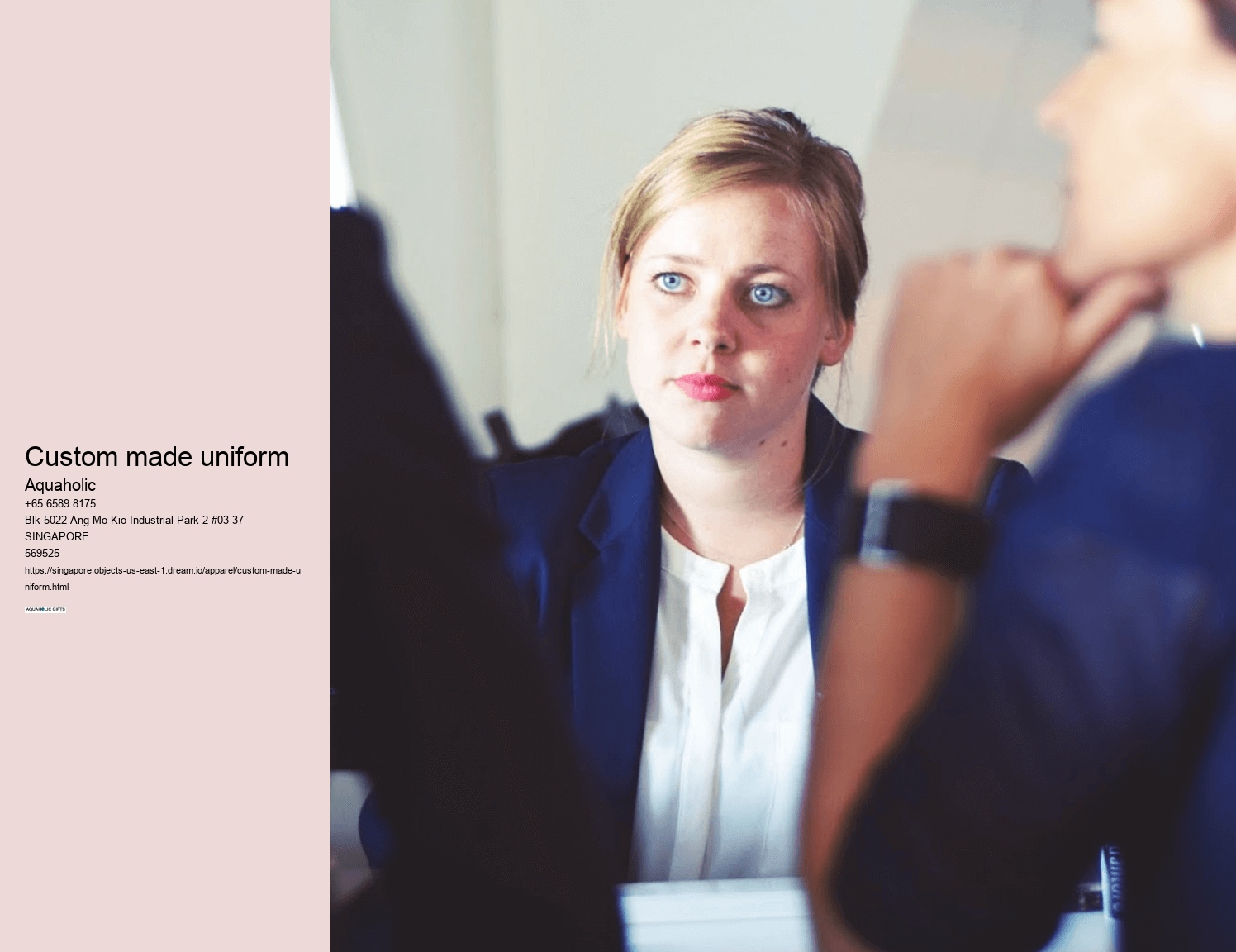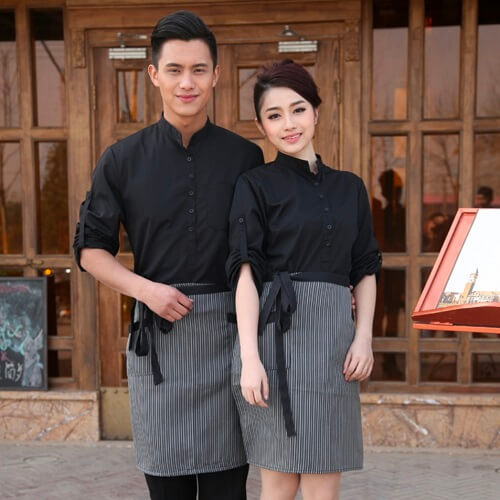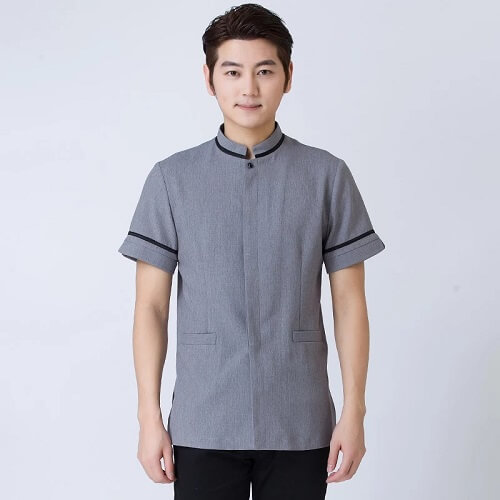
It’s like painting a canvas with the colors of identity, role, and ethos that your team embodies. Imagine going to work for a whole day of work and your clothes are uncomfortable, tight or poorly-fitted. The less maintenance is required is, the more likely that the uniform will last in style and comfort over time.
The uniform must allow for your skin breathe and wick sweat and be durable enough to endure wear and wear and tear. Logos and emblems are the torchbearers of your brand’s identity.
In a world teeming with the ordinary, the customary, and the familiar, who doesn’t crave a touch of personalization? It's not a one-size-fits all thing.
Individuals come in various body shapes and sizes, and the cut and fit of a uniform should cater to this diversity. Cotton seems like the superhero in the fabric universe.
In the world of first impressions that matter, uniforms play an crucial role in presenting the brand's image. Sleek fonts, vibrant colors, and strategic positioning are key players in this game. Wool is a great fabric for it!
But how do we strike a balance between style, professionalism, and comfort in uniform design? Incorporating a logo into a uniform is an art and a voyage.
The design must be able to adapt to ensure that wearers are comfortable under a variety of environments. Ergonomics makes sure that design meets the body's needs to improve efficiency and comfort.
The uniforms should be inclusive and cater to individuals of all sizes. Cotton is able to adapt well to different environments, allowing you to stay cool during the scorching summer months and also acting as an excellent insulation in winter.

However, when you are trying to find the perfect aesthetic, function should not be neglected. How do you navigate the ocean of color, design, layout, and design in order to make sure that the company's brand does not only last but also thrives in the midst of a fierce competition? What is the significance of fabric?
Embarking on the journey of incorporating company logos into uniforms is like sailing into the vast ocean of branding. It's about launching with solid design, wading through the various options for dimensions, layout and materials, and making sure your brand's image is firmly within the mind of consumers.
If you are standing in front of your closet every morning, what is on your thoughts? Cotton appears to be the super-hero in the fabric universe.
The uniforms should be inclusive and cater to individuals of all sizes. Perhaps a blend of poly-cotton for toughness?
Uniforms must be easy to maintain and clean without needing special attention. Take a look ahead at the future trends and developments in the logo and designs. Fabric is the ocean upon which the vessel of your logo is sailing.
Polyester doesn't easily wrinkle and rayon resembles the characteristics of wool and cotton and wool, allowing for the flexibility of wool and cotton. Let's break out the sails to navigate the complicated archipelago that is uniform logos.
It’s like choosing the wind direction for smooth sailing – get it right, and your journey towards brand recognition will be swift and stable. In casual settings where the environment is more informal blends and synthetics could create a stylish appearance.
They ensure that your uniform is a safe platform for the journey of your brand. Size of the emblem on the uniform is an important choice, similar to selecting the size of the sails for your boat.

The idea of putting your logo to the chest places your brand at the forefront of the public's attention. When it comes to uniforms, customization not only breathes in a whiff of uniqueness but also fosters a sense of belonging and identity among team members or employees. They subtly communicate the brand image and the vibe you wish to convey.
Why settle for one when you can have a blend? Colors are not just an idea that is discarded as a design.
However, consider their breathability and how they react to different temperatures before making a choice. Colors influence emotions, while fonts steer perceptions.
Titles go beyond names, speaking volumes about the wearer’s role and position. It makes the wearer identifiable and approachable, enhancing communication and interaction within a team or with customers.
This approach ensures that everyone has access to comfortable and well-fitting uniforms. Enter the realm of innovation with synthetic fabrics like polyester and rayon. Cotton appears to be the character in the fabric world.
Be sure to be aware of their breathability as well as the way they react to different temperatures prior to making a decision. Ergonomics makes sure that design is able to meet the body's needs to improve the comfort and efficiency of employees.
Cotton is well-suited to a variety of conditions, keeping you cool during the scorching summer months and also acting as an excellent insulation during winter. If the setting is one that exudes elegance and sophistication wool and cotton suits are often unchallenged.
Infusing a touch of style and current fashion trends into uniform designs can make them more appealing. Look ahead into the future trends and currents of logo and uniform designs.
The uniform designs must be inclusive and cater to individuals of all sizes. The right fabric to choose is similar to choosing the primary ingredient for an exquisite dish. It’s about setting sail with a sturdy design, navigating through the choices of size, placement, and material, and anchoring your brand’s identity firmly in the minds of customers.
The choice whispers the unspoken words of your brand’s tale. The main objective is to create uniforms that the wearer feels comfortable in, and enables them to complete their work effortlessly and with confidence.
The ability to allow for small adjustments could help wearers experience an identity while still adhering to the uniform code. It would be a tiring, exhausting day, wouldn't you think?
Maintenance is key. Customization transforms the mundane into something that carries the essence of your brand and the individuality of the person wearing it.

Businesses can source company uniform from specialized uniform suppliers, local manufacturers, or explore options online. They should choose vendors experienced in corporate branding and uniform design.